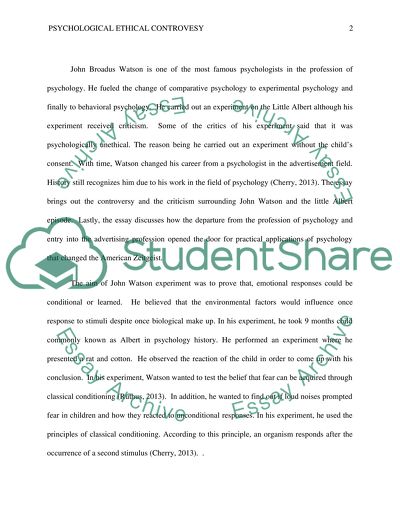Cite this document
(“Psychological Ethical Controversy. Watsons experiment on the Little Research Paper”, n.d.)
Psychological Ethical Controversy. Watsons experiment on the Little Research Paper. Retrieved from https://studentshare.org/psychology/1490309-psychological-ethical-controversy-watsons-experiment-on-the-little-albert
Psychological Ethical Controversy. Watsons experiment on the Little Research Paper. Retrieved from https://studentshare.org/psychology/1490309-psychological-ethical-controversy-watsons-experiment-on-the-little-albert
(Psychological Ethical Controversy. Watsons Experiment on the Little Research Paper)
Psychological Ethical Controversy. Watsons Experiment on the Little Research Paper. https://studentshare.org/psychology/1490309-psychological-ethical-controversy-watsons-experiment-on-the-little-albert.
Psychological Ethical Controversy. Watsons Experiment on the Little Research Paper. https://studentshare.org/psychology/1490309-psychological-ethical-controversy-watsons-experiment-on-the-little-albert.
“Psychological Ethical Controversy. Watsons Experiment on the Little Research Paper”, n.d. https://studentshare.org/psychology/1490309-psychological-ethical-controversy-watsons-experiment-on-the-little-albert.


